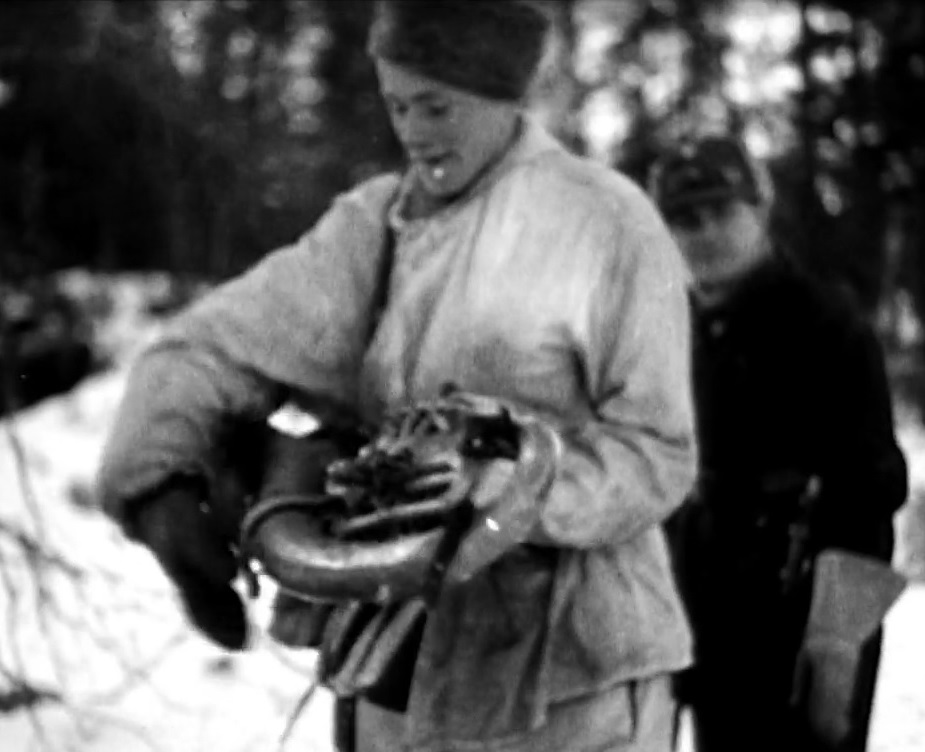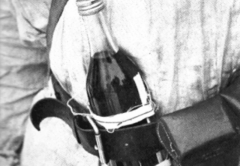Russia invades its neighbor, believing it will be an easy conquest. Commanders expect rapid success on the battlefield. On paper, the Russian military is superior to its opponent in every dimension. After the operation begins, though, things aren’t going as planned. The enemy is far more proficient and tenacious than expected. While the adversary can’t confront Russian tanks in head-to-head combat, it finds creative, asymmetric ways to mitigate their threat.
A story from the headlines in 2022? While this arc could describe the Russian invasion of Ukraine, a strikingly similar scenario occurred in Finland in 1939. This substory of World War II is known in the West as “The Winter War.” The similarities are striking.
Finland
Russian influence in Finland has a long history. But specifically, in the summer of 1939, Finland became a target for Soviet invasion following the signing of The Molotov-Ribbentrop Pact. Publicly, this was a non-aggression agreement between Germany and the Soviet Union. Secretly, it also spelled out how the signatories would divide up future spheres of influence in Europe. The pact assigned Finland to the Soviet sphere.
Beyond Molotov-Ribbentrop, Russia had defensive concerns regarding its western frontier. Non-aggression pact withstanding, Russia feared a future German attack via Scandinavia. The Finnish border was only 32 kilometers east of its second most important city, Leningrad. To address this, Russia offered Finland sections of their northern borderlands in exchange for the area nearest Leningrad: the Karelian Isthmus and some islands in the Gulf of Finland. Finland was not interested in taking the deal.

Ukraine
Russia has also long held influence in Ukraine. Before World War I, Ukraine was part of the Russian Empire. In 1917 the country gained independence, though the Bolsheviks eventually forced it back into the Russian fold, and it became a founding member state Soviet Union in 1922. When that union unraveled in 1991, Ukraine again became an independent nation. Though swayed back and forth by eastern and western influences over the years, the country gradually aligned itself closer to the West and NATO. Though NATO rebuffed Ukraine’s application for membership in 2008, it offered vague promises that someday participation would be possible. These negotiations alarmed Russia. Since the Soviet breakup, the country had been losing influence over its former satellite states. If Ukraine joined NATO, an additional 2,300 km of Russia would directly border NATO territory.
Molotov Breadbaskets
Now back to the 1930s. After negotiations regarding moving the border near Leningrad failed, Russia invaded Finland. They aimed to take Helsinki, the Finnish capital, by force and install a puppet government. The Russian brass expected this operation to take a few days or weeks; soon, they would be parading in the capital, celebrating Finland’s “liberation from fascists.”
The Soviets bombarded Finland by air in an attempt to break morale. Hundreds of RRAB-3, Russian cluster munitions, were dropped on Helsinki, killing ninety-seven people and injuring hundreds more. The Finns jokingly nicknamed these bombs “Molotov’s Breadbaskets” because Soviet Foreign Minister Vyacheslav Molotov publicly claimed they were dropping food rations, not bombs. But the Finns weren’t starving.

After a couple of weeks, it was clear that plans for a quick victory had gone awry. Russia attempted to invade Finland simultaneously in the north at Lapland, in the south through the Karelian Isthmus, and in the middle at Suomussalmi. The Russians had not been unable to break Finnish defenses at any of the locations. They found themselves outmaneuvered and forced into retreat.
What had gone wrong? The Russian expectations for invading Finland were paced by what had occurred in Poland two months earlier. In that case, German and Russian tanks used Blitzkrieg tactics to invade a country that existed on flat land and hosted a network of well-maintained roads.
Here though, despite covering a massive 1340 km border, the touchpoints between Finland and Russia consist mainly of forest and swampland. The sparsely populated area has few, often unpaved roads. The only place with developed roads between these two countries was the Karelian Isthmus in the south. Unlike in Poland, forest surrounded most of these limited routes, which offered plenty of ambush opportunities by the defenders.
Kyiv
The initial invasion of Ukraine was a similar disaster. Here, the Russians also expected a quick victory and sent ground forces through several entry points and straight towards the capital, Kyiv. But the Ukrainian reaction was to defend vigorously, which surprised the Russians and left them flat-footed. Russian convoys could not maneuver quickly and ran into logistical problems such as the inability to resupply. Russia had planned an invasion that would last days or weeks, not months. A convoy of trucks and other vehicles dozens of miles long had reached a standstill on the way to resupply the troops attacking Kyiv. Fuel was short, Ukrainians broke apart the convoys, and soon the Russians gave up on the attack on the capital in under one month.
A Thwarted Invasion
Something similar happened in Finland. How could lightly-armed Finns – mostly reservists – effectively fend off its initial wave of Russian invaders? Like Ukraine, they outmaneuvered the enemy in several ways. They understood the terrain. Using soldiers on skis meant they were not limited to the roads like the Russians and thus more maneuverable. They prepared adequately for the particularly frigid winter weather that year. Lastly, they used creativity.
An example of this superior Finnish maneuverability was the Battle of Suomussalmi. The Soviets planned to cut Finland in half along its horizontal axis, isolating its sparsely populated northern half from the rest of the country. They used large columns of tanks in a Blitzkrieg-style approach along unpaved logging trails to accomplish this. It didn’t work. In what became known as the “Motti” tactic, Finnish troops on skis ambushed these convoys in hit-and-run attacks, immobilizing both the convoys’ fronts and backs. The move carved large convoys up into smaller convoys. Further attacks divided them again. The smallest convoys were eventually crushed or left to freeze, immobilized with inadequate gear for the winter. What did the Finns find in the rubble? Musical instruments for the upcoming “victory parade.” Literally.

A drink to go along with the food
But The enduring symbol of Finnish creativity during the Winter War is the Molotov Cocktail. The petrol bomb’s widely used nickname is a derogative reference to Vyacheslav Molotov’s “breadbasket” bombs the Russians dropped on Helsinki. The Molotov Cocktail was the Finns’ response to those bombs – “a drink to go along with the food.”


A Molotov Cocktail consisted of nothing more than gasoline, tar, and kerosene in a glass bottle with a fuse. When a soldier threw one on top of a tank and broke the bottle, the contents caught fire and covered the target. The Finns did not invent this concept; petrol bombs were first used en-mass by Franco’s troops to stop tanks a few years earlier in the Spanish Civil War. But Finnish engineers perfected its implementation.
A design flaw plagued Russian tanks of the era, making them vulnerable to petrol bombs. These tanks required ventilation systems to clear exhaust from the turret area that housed the operators. Military engineers discovered that a sufficient amount of burning sticky mess spilled over the ventilation system’s inlets would force its crew to vacate the vehicle to escape the toxic smoke. Sometimes, the tank’s ammunition or fuel could even catch fire and explode.
When war with Russia became a clear and present danger in 1939, Finland purchased Bofors, a type of Swedish anti-tank gun, in hasty preparation for war. But it was too little too late. Since the military could not deploy these weapons fast enough for the imminent Russian invasion, anti-tank experts slapdash researched the Molotov Cocktail as a stop-gap measure.
These experts fiddled with different types of bottles, ratios of flammable liquids, and types of fuses at the State Central Liquor Factory in Rajamaki. The 1-liter vodka bottle won out against all other containers by presenting the best balance between being both easily breakable and throwable. Alko, the monopolist Finnish state-run liquor retailer, produced them by the thousands and sent them to the front lines at the Karelian Isthmus.
When unveiled to Finnish troops as the latest anti-tank technology, the Molotov Cocktail did not immediately inspire confidence among the troops. They wondered how they could possibly safely get so close to an enemy tank as to use one of these contraptions. But it didn’t take long for the cocktail to prove its worth. Russian tanks tended to drive far ahead of their infantry escorts. Finnish anti-tank teams hiding in the forest could descend quickly on skis. Before the tank operators could react, the Finns could throw several burning Molotov Cocktails onto the tank and retreat to cover. The strategy worked, tanks were disabled, and Finnish morale soared. Throughout the war, Molotov Cocktails disabled some 350 Russian tanks and other vehicles.
The Javelin
At the onset of the 2022 conflict, Ukraine was at a vast disadvantage in armored vehicles compared to Russia. Though modern tanks don’t suffer from the design flaws that made the Molotov Cocktail effective in World War II, Ukrainians have some modern-day equivalents. Since 2018 the country has been building a large inventory of FGM-148 Javelins, a US-made anti-tank rocket. Fired from the shoulder, the Javelin climbs in altitude and then attacks its target from above, where a tank’s armor is typically weakest.


Javelins and NLAW missiles, the smaller and cheaper British peer, have destroyed hundreds of Russian tanks and thousands of armored vehicles in the conflict in Ukraine. Their effectiveness in turning the tide against invaders lifted them from the realm of military practicality and into pop culture symbolism. “Saint Javelin,” a meme created by journalist Christian Borys depicts a stylized Madonna holding the anti-tank weapon like a baby. Christian, a Ukrainian Canadian himself, created the image to raise money for a Ukrainian charity. The meme went viral and raised over $1 million with merchandise sales. The popularity of “Saint Javelin the Protector” transcends the internet and has been painted as a massive mural on an apartment complex in Kyiv. The Javelin is Ukraine’s Molotov Cocktail.


End Game
After the embarrassing initial attempt to invade the entire country of Finland failed, Russia changed tactics. It focused solely on taking control of the Karelian Isthmus near Leningrad. After three and a half months of battle, they pushed the Finns back behind their main defensive barrier, The Mannerheim Line. Finland negotiated peace after agreeing to give up the Karelian Isthmus to Russia – about 10% of the country’s total land. A success story? Hardly. Hitler was unimpressed by this slow going and thought Russia would prove easy to invade. The Molotov-Ribbentrop Pact would not be for long.
In Ukraine, Russia’s botched invasion led them to abandon plans to take over Kyiv and the entire country. The focus became on controlling the eastern Donbas region, which could connect Russia to occupied Crimea and create a land bridge to the Black Sea. While the conflict still rages as of this writing, we may see a similar negotiated peace like Finland, where Ukraine cedes some territory to end the war.
